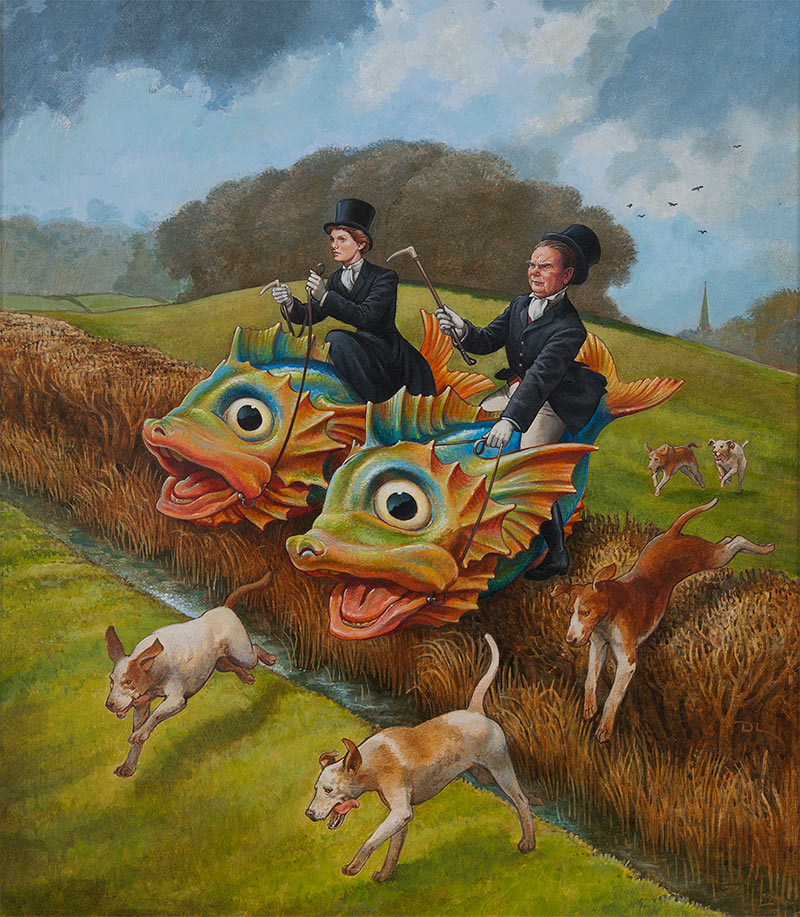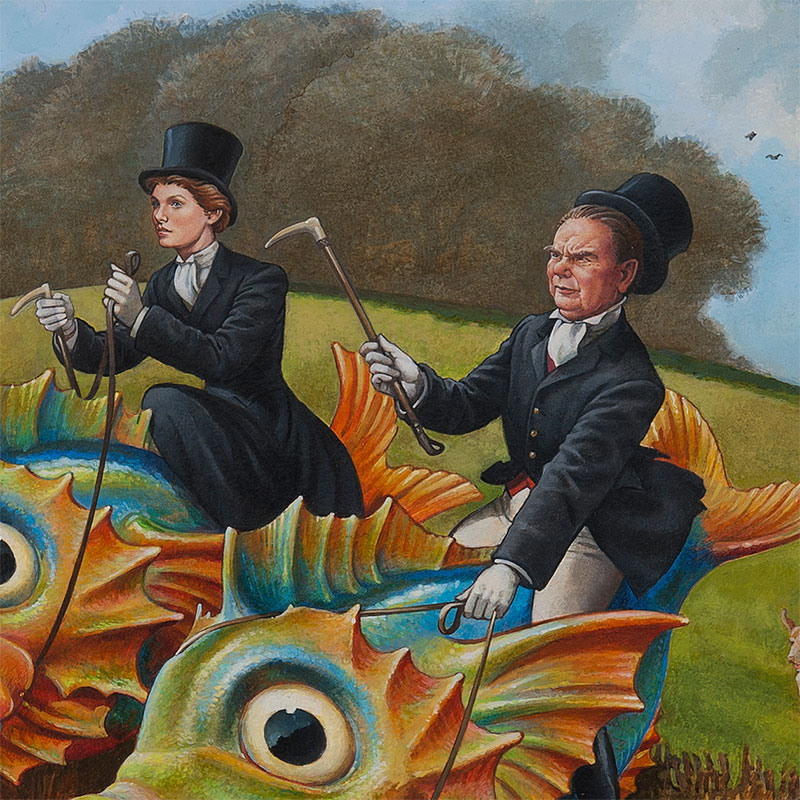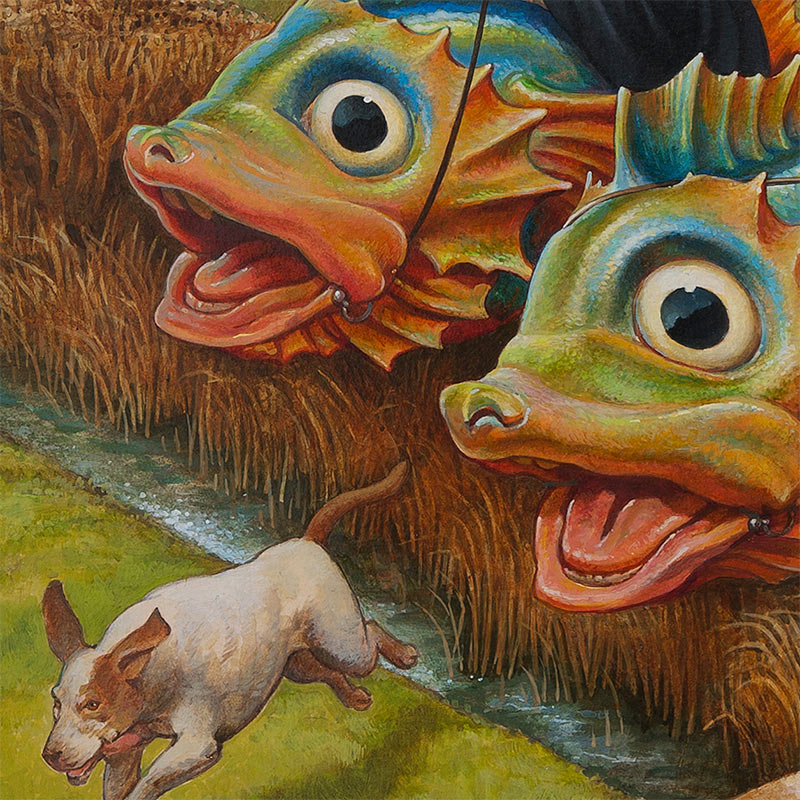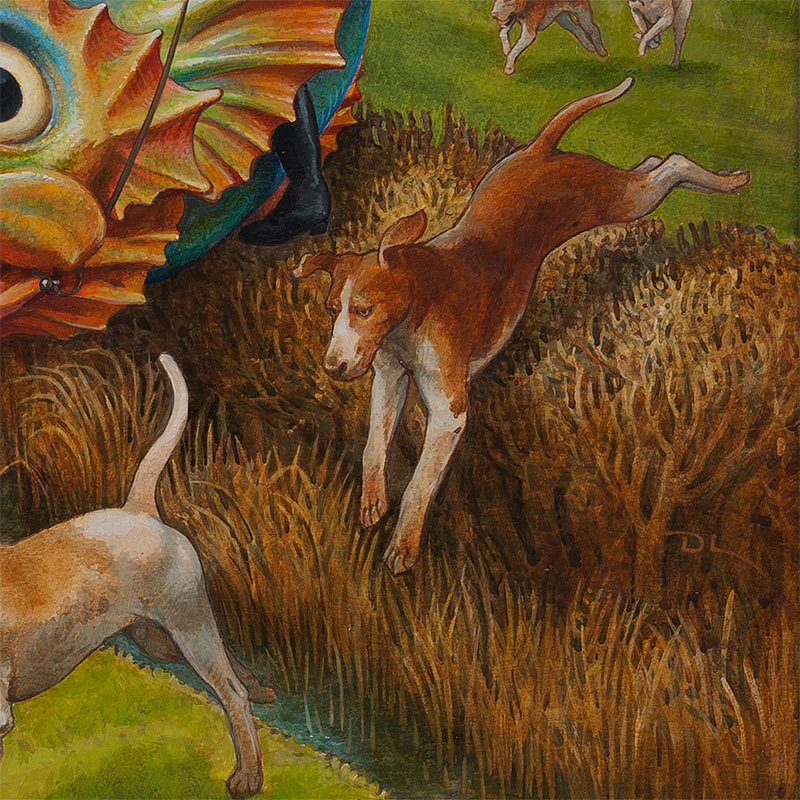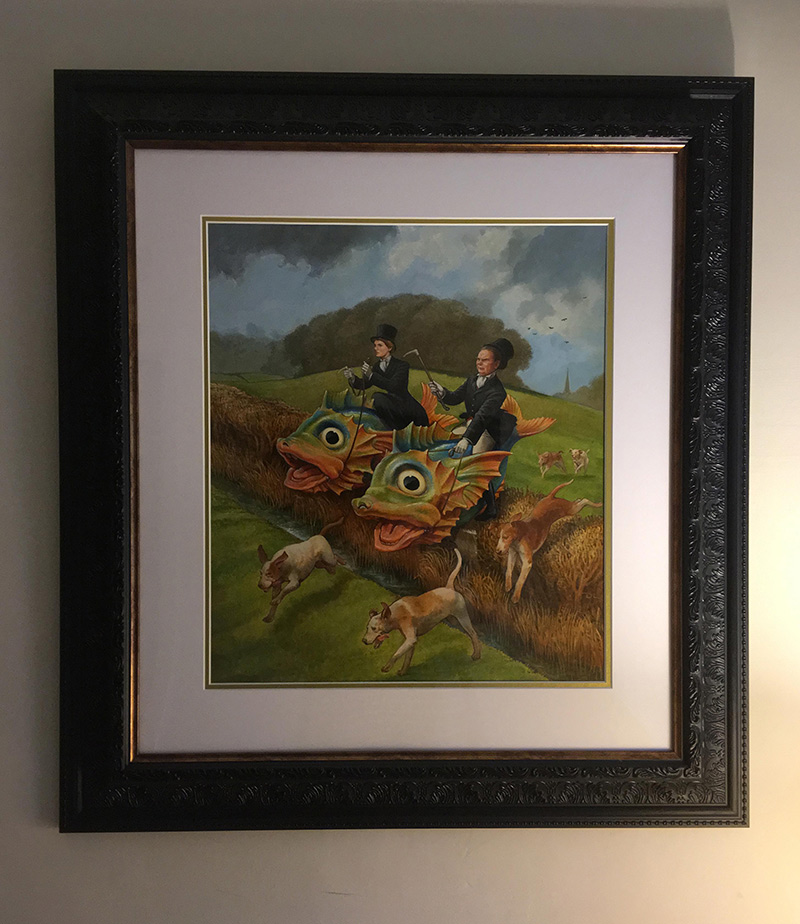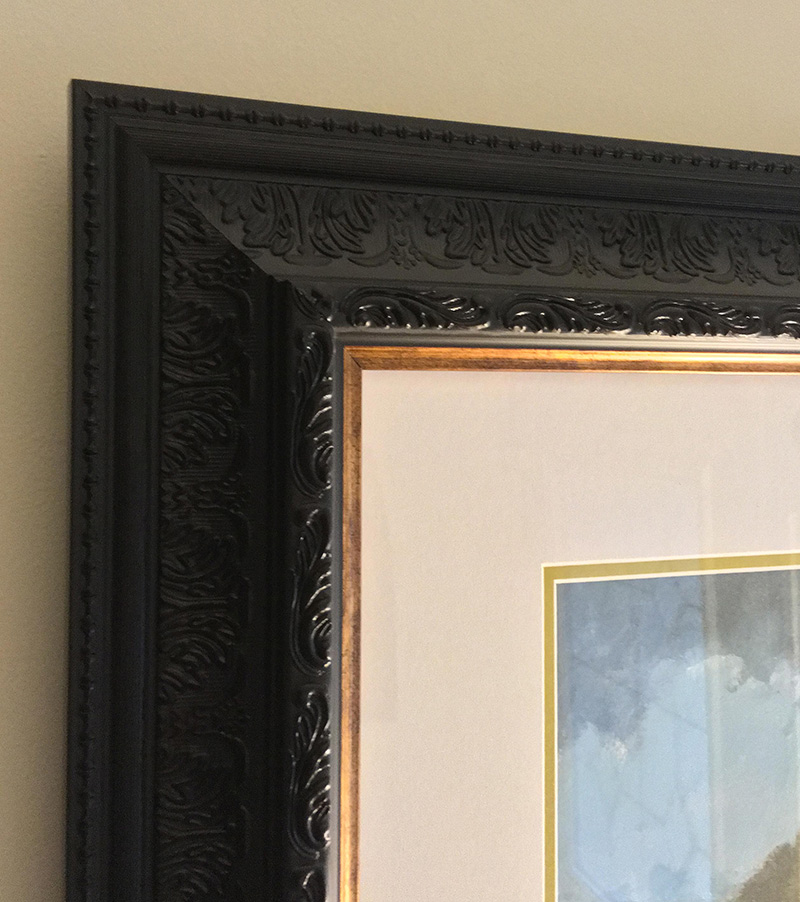Description
‘Tally Ho!’ by David Lawrence
Artist: David Lawrence
Title: ‘Tally Ho!’
Medium: Oil on Watercolour Board
Dimensions: 18.5” x 15.7”
Framing: Framed (Frame Size: 31.1” x 27.9”)
Year of Creation: 2018
About the Artwork:
“Tally Ho! is the traditional cry put up by the Hunt when its quarry has been sighted and the chase is on. The fuller title for this painting would be ‘Tally Ho – the Scampi break cover!’ – the two riders are seen launching themselves into a hunt to the death…..such events were once a frequent sight o’er the hills and dales of the English landscape.
My painting tends to be both traditional in feel and to reference English culture and traditional activities. I am very fond of English landscape, history and music – but also I am very fond of the absurd. The ridiculous juxtaposition of ideas and images is what makes life worth living. Rene Magritte got it right every time. One of the aims of my paintings is to make people laugh out loud.” – David Lawrence
About the Artist:
(Artist Bio)
My work is rooted in the English Idiom: in the landscape, customs, traditions and eccentricities of this ancient land. It is a place of history and mystery: my work often references past legends and myths – both real and (more usually) imagined.
I draw my inspiration from the Eternal Cycle of the Seasons; from the fight between the Light & Dark; from the Battle of the Field; the twilight world; the subconscious voyage; a world beyond reality.
I had been painting in this vein a while before I came across the terms ‘Pop Surrealism’ and ‘Low Brow’ – I thought I was alone in creating a chronicle of the odd and inexplicable. I found it immensely reassuring to discover that I was not alone.
For the first thirty five years of my career I worked as a ‘pastiche artist’ in Advertising & Publishing: mimicking the styles and techniques of the Masters – from Bewick woodcuts through Leonardo & Rembrandt to Van Gogh & Kandinsky – working on high profile campaigns promoting everything from leading brands of beer and cheese to hemorrhoid cream.
While this may have given me a good grounding in the mechanics of painting I always found the ephemeral nature of commercial work somewhat dispiriting: one day one’s work would be seen on billboards, tube stations & newspapers – the next it would be utterly forgotten; hours of endeavor cast into the void.
The fleeting nature of this commercial work led, eventually, to my seeking a more considered & lasting approach to painting: free from the dictates of Art Directors. Only now am I able to focus on my own ideas: I look forward greatly to the coming years & what they may hold.
So why work in this genre?
There is a strong tradition of Visionary Surrealism that has run through the history of British Art for over a thousand years – I do not believe that Surrealism originated in Europe in the early twentieth century – surely it had already been long established here. The English have long had a love of the magical, the strange and the absurd – from the skewed perspective and bizarre, miraculous occurrences in Medieval Illuminations; through William Blake’s ‘Portrait of a Flea’ and Samuel Palmer’s ‘Magic Apple Tree’; to Stanley Spencer’s resurrected villagers & commonplace saints and Kit William’s Masquerading Hare. And Surrealism is a tradition that remains alive & well today.
I work in various mediums on various surfaces – I prefer firm flat surfaces such as stretched paper, primed watercolour board or primed mdf (Masonite) – I don’t like the texture & ‘give’ of canvas. Drawing is a major component of the artwork – various elements may be drawn and then comped together in Photoshop & sometimes giclee printed onto watercolour paper before adding paint. I prefer oil paint as it retains its brilliance better and can be reworked while still wet….I tend to paint in glazes as I was trained as a watercolor artist – and it’s hard to get away from that.
The design of a painting can take years – I’ve got several designs nearly ready to paint which started as sketches or scribbles in the 1990s. Sometimes I’ll return to an old design and it will inspire me to add a new twist – an unexpected juxtaposition – which will lift it out of the ordinary.
A painting can take 150+ hours – I used to count the time but found it counterproductive: it made me think of how much I should charge to justify the effort (much more than I dare ask!) & led to me hurrying things. It is sometimes hard to finish paintings as new ideas come along & shout louder & always seem more fun than something that’s been in the studio for a while.
I trained as a ‘Scientific Illustrator’ – painting birds and flies and whatnot in photographic detail. However as soon as I graduated I realised that if I stuck to working for Bird Books and Nature Guides I’d never be asked to paint a gnome nor use my imagination – and so I very quickly had to reinvent myself.
I see my most recent work as continuing along the way of the absurd.
Drawing on elements of Folklore, Legend and Myth these narrative paintings chronicle a world of the maybe and may have been.
What exactly is happening in these paintings is not revealed – it is better for the viewer to construct their own meaning, with reference to their own experience, beliefs and fears.
Most ideas for my paintings come into my mind fully formed: the result of the subconscious working on the massed jumble in my head – trying to make some sense of it all: images of medieval iconography on the West Door of Exeter Cathedral, playing the role of The Guiser in The Mummer’s Play, Krampus, George Cruikshank’s drawings for Grimm’s Folk Stories, the Witches Bottle in The Pitt Rivers Museum, Hogarth’s paintings in the John Soane’s Museum, the Adventures of Rupert, Pippety’s Unlucky Day, Gifford’s Circus, the Reliquaries of St Mark’s, Stingray, Ray Harryhausen, Sir John Mandeville, The Singing Ringing Tree, Ca Goldoni, early Alchemical engravings, Nursery Chryme, Worzel Gummidge….and so on….and so forth.
Taking the idea to a finished piece of artwork can be quite a journey however.

